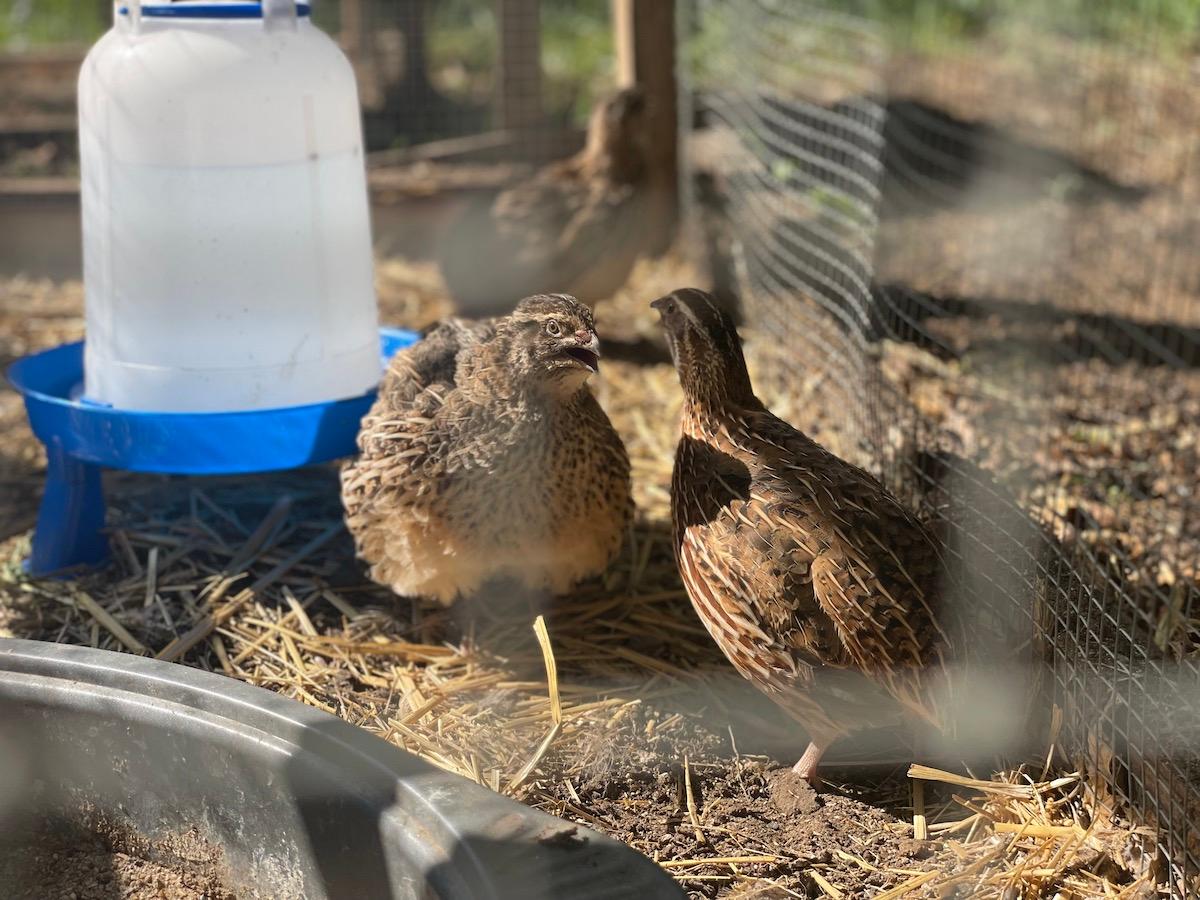For backyard and small-scale keepers in Texas and similar climates
🌾 Introduction: Why the Comparison Matters
If you’re exploring quail keeping in Texas, you’ll quickly learn there’s more than one kind of quail. The two most common species for small-scale keepers are Coturnix (Japanese) and Bobwhite (Northern Bobwhite).
They may look similar at a glance, but they differ greatly in temperament, legal status, production, and purpose. Knowing which fits your goals—eggs, meat, conservation, or education—can save you time and frustration.
🐥 Coturnix Quail: The Domesticated Workhorse
Coturnix quail (Coturnix japonica) are fully domesticated birds bred for generations for egg and meat production. They reach maturity in just six to eight weeks (Texas A&M AgriLife Extension, n.d.).
- Eggs: Up to 250–300 per year with consistent lighting and good feed.
- Meat: Fast-growing with strong feed conversion efficiency.
- Temperament: Docile and easy to handle—ideal for beginners.
- Housing: Thrive in cages, pens, or small indoor systems with shade and airflow.
Because Coturnix don’t rely on wild habitat, they adapt well to backyards or urban farms. They tolerate Texas heat when given proper ventilation and hydration. However, they rarely brood eggs naturally and should never be released outdoors.
(Texas A&M AgriLife Extension, “Producing Quail for Home Consumption.”)
🕊️ Bobwhite Quail: The Native Conservation Bird
The Northern Bobwhite (Colinus virginianus) is native to North America and historically abundant across Texas grasslands. Populations have declined in many regions due to habitat loss (Texas A&M AgriLife Extension, “Texas Quails: Ecology and Management.”).
- Maturity: 16–20 weeks before laying begins.
- Eggs: Seasonal layers with smaller annual yields.
- Behavior: Flighty and territorial—more “wild” than Coturnix.
- Best Setting: Large aviaries or outdoor pens with brush and cover.
Because Bobwhites are native game birds, breeding or releasing them requires a Game Bird Breeder License from the Texas Parks and Wildlife Department (TPWD, n.d.). Most small-scale keepers raise them for conservation or education, not for intensive egg or meat production.
⚖️ Coturnix vs Bobwhite: Side-by-Side Comparison
| Feature | Coturnix | Bobwhite |
|---|---|---|
| Origin | Domesticated (Japan/Asia) | Native North America |
| Primary Use | Eggs & meat | Conservation & release |
| Age at Maturity | 6–8 weeks | 16–20 weeks |
| Egg Production | 250–300/year (avg.) | 60–120/year (seasonal) |
| Temperament | Calm, docile | Flighty, territorial |
| Housing Needs | Adaptable to cages | Requires natural cover |
| Legal Status | Few restrictions | Permit required (TPWD) |
| Best For | Beginners & backyard keepers | Conservation & education projects |
🌦️ Climate and Environment in Texas
- Heat: Both species require shade and ventilation; Coturnix handle confinement better.
- Habitat: Bobwhites depend on brush, native grasses, and insects to thrive.
- Brooding: Coturnix chicks mature faster; Bobwhites need longer brooding periods.
- Feed Efficiency: Coturnix generally offer more yield per pound of feed
(Texas A&M Natural Resources Institute, “Habitat Requirements of Texas Quail.”)
🏡 Choosing the Right Quail for Your Goals
- Eggs or meat quickly? → Coturnix.
- Habitat restoration or wild calls at dusk? → Bobwhite.
- Teaching projects or urban setups? → Coturnix (friendly and small space ready).
- Conservation work with permits? → Bobwhite.
If you keep both species, house them separately to prevent aggression and disease crossover.
❓ FAQ: Coturnix vs. Bobwhite Quail
Can Coturnix and Bobwhite be housed together?
No. Their behavior and disease risks differ significantly. Bobwhites are more aggressive and flighty.
Can Coturnix be released into the wild in Texas?
No. They are non-native and poor survivors outside captivity.
Are Bobwhites endangered?
Not federally endangered, but considered a species of conservation concern in Texas due to habitat decline.
What permit is required for Bobwhite breeding or release?
You’ll need a Game Bird Breeder License issued by the Texas Parks and Wildlife Department. Details are available on TPWD’s official site.
🔗 Related Reading
- Thinking About Raising Quail
- How to Store, Wash, and Handle Quail Eggs Safely
- Are Quail Eggs Healthier Than Chicken Eggs?
📚 References
- Texas A&M AgriLife Extension Service. Producing Quail for Home Consumption.
- Texas A&M AgriLife Extension Service. Texas Quails: Ecology and Management.
- Texas A&M Natural Resources Institute. Habitat Requirements of Texas Quail.
- Texas A&M AgriLife Extension Service. Quail Production / Farming / Industry.
- Texas Parks and Wildlife Department. Commercial Game Bird Breeder License — Information Sheet.





